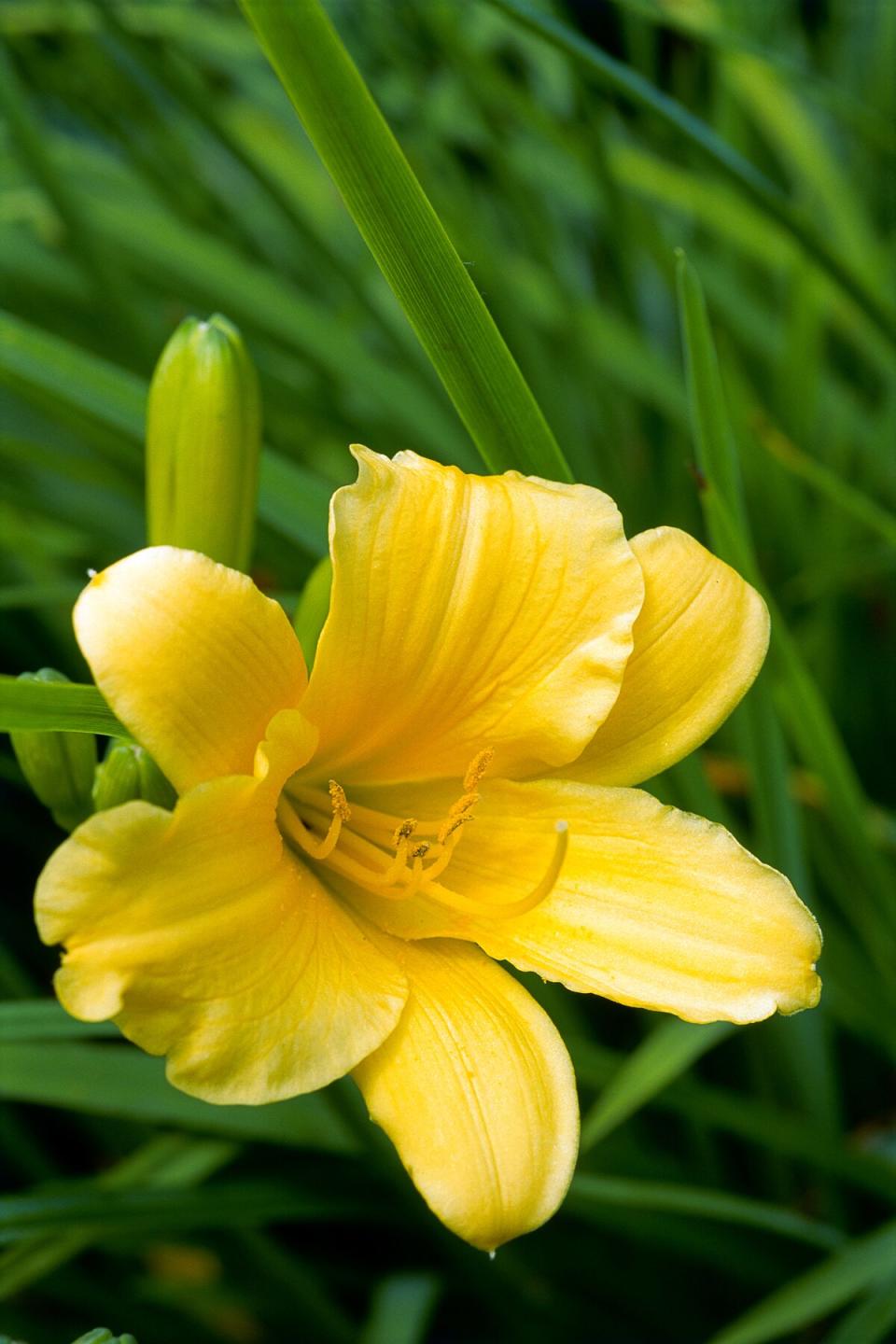Everything You Need to Know About Growing and Caring for Daylilies
Colorful and dainty, daylilies are perennials that bloom during the summer months. "The plant gets its name because the flowers only last one day each, but you can have many different flowers emerging off a single stem, resulting in weeks of repeat blooms coming from each plant," garden and landscape designer Amber Freda explains. However, the flowers are not actually lilies—they're a different species altogether, Hemerocallis, while lilies are Lilium.
The blooms are just as gorgeous as typical lilies, though. They create visual interest in a garden, and professional gardener Melinda Myers adds that daylilies are relatively easy to grow and care for. "They are durable and adaptable plants, and require minimal maintenance once established," she says. "Buying from a local nursery or garden center, or talking with your local daylily society, can provide great insight on varieties that thrive in your area."
Related: How to Care for Your Easter Lilies

Anne Green-Armytage/Getty
Plant them in full sun.
Myers says daylilies require at least six or more hours of direct sunlight a day to grow to their fullest potential. "If you live in a hotter region, a bit of afternoon shade can help keep the flowers looking their best," she adds. "However, too much shade might cause the foliage to flop and the plants to fail to bloom."
Plant daylilies in nutrient-rich soil, about an inch below the ground.
Before you plant daylilies in your garden, Myers suggests working compost and a low nitrogen, slow-release fertilizer, into the soil. "Incorporating compost into the soil prior to planting improves drainage, and for sandy soils, can increase the water holding ability, while the fertilizer will help provide nutrients to the plants," she explains. When planting daylilies, she recommends digging a hole wide enough to accommodate the roots and setting the crown (the area where the plant's roots join its leaves) about an inch below the soil surface. "Fill the hole with soil, gently tamp and water thoroughly to help remove any air pockets and settle the soil," she says.
Provide daylilies with an inch of water a week.
While established daylilies are hardy enough to tolerate dry conditions, Myers says they produce superior blooms in moist, but not soggy, soil. "Whether from rainfall, irrigation or a combination of the two, daylilies thrive with about an inch of water a week," she says. "You will need to water less when temperatures are cool and the soil is mulched, and you may need to water more often when gardening in sandy, fast-draining soils or when temperatures soar."
Keep the soil moist with mulch.
To ensure the soil your daylilies are planted in stays moderately moist, Myers suggests mulching the soil surface with shredded leaves, evergreen needles, or other organic material. "This will help conserve moisture, suppress weeds, and improve the condition of the soil as it breaks down," she explains. She also recommends topdressing the soil with one to two inches of compost every year to promote better plant growth. "Spreading the compost over the soil surface and around the plants may reduce or eliminate the need for yearly fertilization," she says.
Deadhead as needed.
If you aren't regularly removing spent blooms and faded foliage from your daylilies, Freda says you're stunting their growth. "Deadhead them often," she advises. "Otherwise, they will put their energy into producing seed pods, rather than blooming more." She also says to pick off any totally brown leaves from the base of the plant to ensure that the foliage stays green and healthy-looking.

